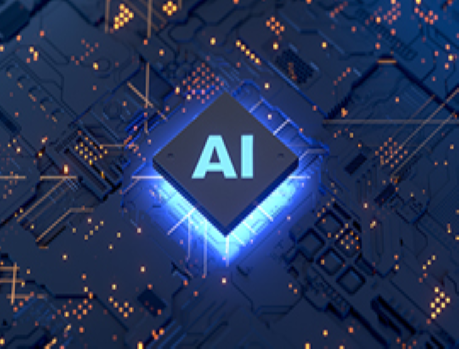Don't Be Afraid to Talk to Medical Students About AI

As smart and tech savvy as today’s medical students might be, many likely don’t understand AI in medicine at this early stage in their career. Students see AI doing some tasks extremely well and assume it is just a matter of time until it can do all things well, even in radiology. They may not realize that, although AI will eventually excel at thousands of narrow tasks to assist radiologists in providing better patient care, AI will never provide the same value radiologists bring to healthcare — or take the place of the radiologist.
Deepening Students’ Understanding of How AI Works
Today’s clinically available AI tools work in tandem with radiologists, performing narrow AI tasks such as prioritizing cases for interpretation based on the presence of intracranial hemorrhage and pulmonary emboli, or enhancing communication with the clinical team in the case of acute stroke with a large vessel occlusion. AI tools are providing opportunities for radiologists and health systems to improve the radiological care of patients. While we will see more and more narrowly focused machine learning (ML) applications become available, radiologists will remain critical to the analysis of clinical history, comparison to prior examinations, medical reasoning, formulation of recommendations, and communicating those results and recommendations to our referring physicians and patients.
Humanistic aspects of radiological care are more complex for ML because they require expertise across the entire specialty, and they encompass medical judgement, communication skills, and, above all, visibility to care team and patients. Radiologists have a distinct advantage over our machine assistants because of the human ability to exercise reasoning and medical judgement — not just to perform detection or measurement tasks.
In fact, explaining to medical students the status of AI tools in radiology can help them understand why AI will support — not replace — radiologists. Yes, it currently performs some narrow tasks well, but there is limited use of AI, and most clinical practices currently face a number of implementation barriers.
Our Specialty Is Poised to Become More Valuable — Not Less
As AI algorithms move from the realm of research to clinical use, there are challenges in generalizing the performance of models trained at a single institution to apply across multiple institutions. Differences in imaging devices and imaging protocols, as well as diversity in patient demographics, can cause AI models to fail unexpectedly outside the environment where they were trained.
Algorithm performance is also destined to degrade over time, particularly if there are changes in equipment, protocols, or patient populations — as well as software upgrades. As AI becomes more prevalent in clinical practice, medical students should know that well-trained radiologists will be necessary to ensure the AI results are accurate and relevant prior to including them in a final report. It will be the responsibility of radiologists to not only verify or change the AI results, but also to fully interpret the entire examination and integrate the results into the overall care plan.
Radiologist-led programs for monitoring the performance of AI models over time must also be implemented to address the issue of algorithm degradation over time. AI cannot be installed and left alone. Radiologists will be required to provide continuous oversight of the performance of AI models in clinical use.
With all of the challenges we face in bringing clinically relevant AI tools to our practices, it is frustrating to see reports in the media — and even medical literature — that compare the results of narrowly focused AI's accuracy in detecting a specific imaging finding at a single institution to the performance of radiologists. Some might infer that the goal of this exercise is the eventual obsolescence of radiologists.
In reality, our specialty's researchers should be focused on sharing results that are beginning to show how AI image analysis can "see" findings and patterns in the data that humans cannot perceive such as hyperacute stroke on CT scans. Let's also share with medical students our excitement over the potential for computer vision and other ML tools to bring us the ability to predict treatment response for a variety of diseases and enhance imaging's role in precision medicine through the recognition of patterns in imaging data otherwise invisible to humans. Like all great tools, AI can help us accomplish more.
These types of applications — along with those for population health management at home and in communities worldwide — have the potential to keep researchers and innovators busy for years to come. If radiologists play a leading role in AI in healthcare, our specialty is poised to become even more valuable to our referring physicians, our health systems, and most of all to our patients. We’re entering an era when we’ll be able to mine vast amounts of healthcare data to improve patient care and achieve things that were impossible in the past — an exciting prospect for medical students who are considering radiology.
AI-Enabled Radiology — A Great Choice for Future Physicians
So, what is the future of AI-enabled radiology? At the ACR Data Science Institute®, we are pragmatic. Our belief is that because AI/ML have great potential to benefit our patients, we should not only embrace them but assume a leadership role in bringing AI/ML tools to routine practice. We must ensure we train a workforce that is capable of fully interpreting imaging examinations and guiding research and innovation into new imaging techniques. No other specialty will be able to perform these tasks as well as radiologists.
Students today aren’t afraid of change or technology-inspired disruption — they have grown up in the era of iPhones, Bitcoin, and Amazon. When they express concern about the future of radiology, they are asking us our value proposition. What do we have that sets us apart and will prevent us from becoming obsolete?
As radiologists, we have a long history of adapting to new technology; it is the essence of our specialty. If radiologists take a leadership role in the adoption of AI into their practices, the opportunities for future radiologists seem almost limitless. The future of our specialty might never have been as bright, and there is no better time to pick radiology as a specialty. One day soon, we will seek out and welcome newly minted AI-enabled radiologists into our practices.
Bibb Allen, Jr., MD, FACR | ACR DSI Chief Medical Officer | Diagnostic Radiologist, Grandview Medical Center, Birmingham, AL
Don't Be Afraid to Talk to Medical Students About AI
-

You may also like
Benefits and Dangers of Synthetic Data for Radiology AIDecember 12, 2022 | Bryant Chang, BS, MS, MS3As radiologists, we strive to deliver high-quality images for interpretation while maintaining patient safety, and to deliver accurate, concise reports that will inform patient care. We have improved image quality with advances in technology and attention to optimizing protocols. We have made a stronger commitment to patient safety, comfort, and satisfaction with research, communication, and education about contrast and radiation issues. But when it comes to radiology reports, little has changed over the past century.